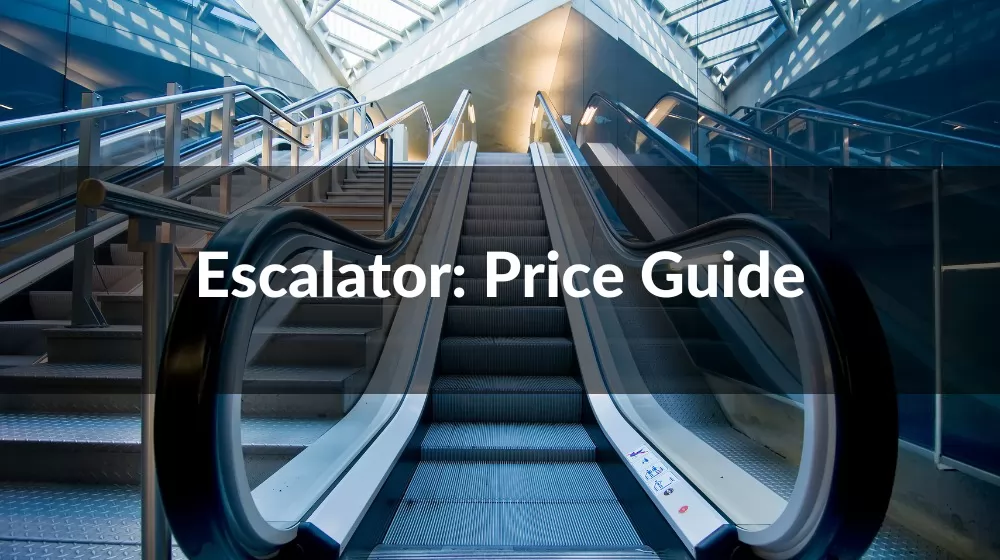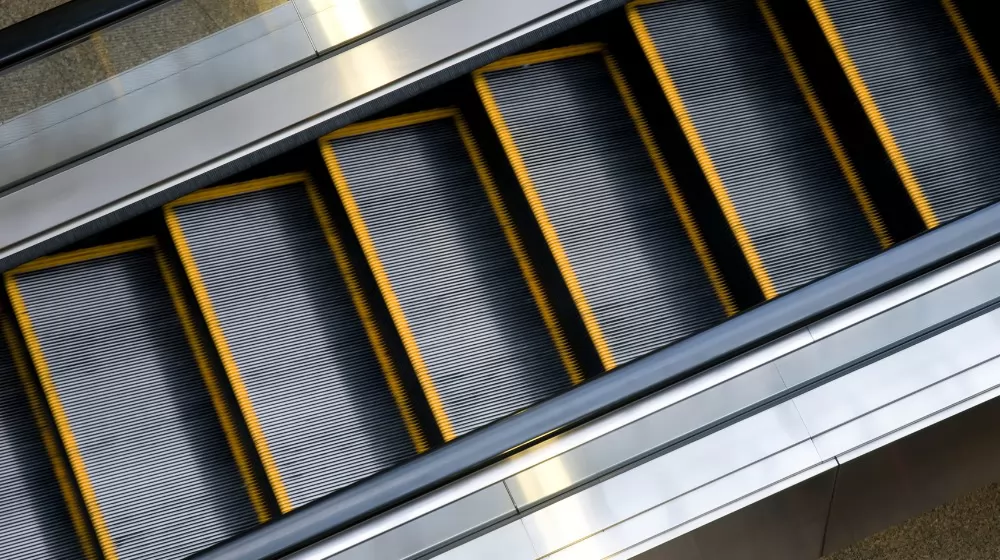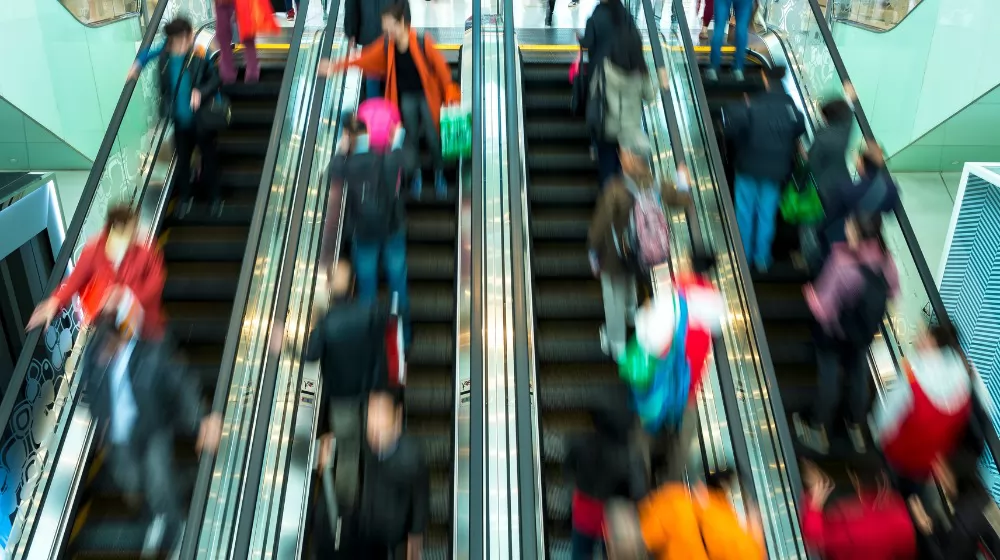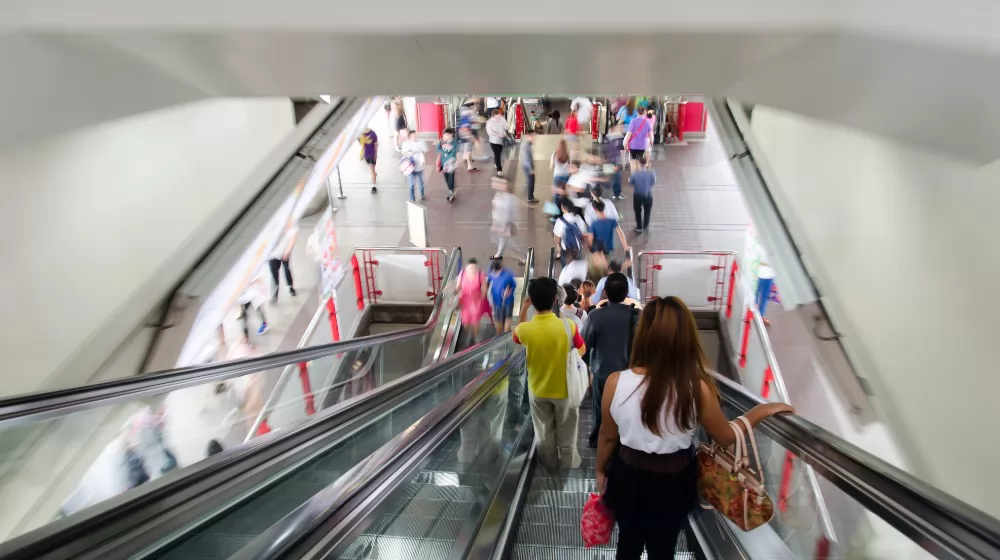
In today's bustling urban landscapes, escalators are more than just a convenience—they are a necessity. Whether it's a commercial establishment eager to ease the customer journey or a modern residence aiming for that touch of luxury, escalators have found their footing in various spaces. In this extensive guide, we delve into the intricacies of escalators including the costs involved, the dimensions necessary for installation, the crucial safety features they encompass, and the significance of regular maintenance. Embark on this enlightening journey to understand the escalator realm before making an informed investment.
Read More:
Types of Escalator: Everything You Need to Know
List of 7 Best Escalator Manufacturers (2023 update)
Escalator: What is and How to Choose?
What is an Escalator?
An escalator is a moving staircase designed to transport people between different floors of a building effortlessly. Unlike traditional staircases, escalators offer a continuous movement, making it easier and faster to traverse between levels, especially in high traffic areas such as malls, airports, and transit stations. The magic behind this modern marvel lies in its meticulously engineered components, chiefly consisting of a motor-driven chain of individual steps that move up or down on tracks, easing the journey of commuters with a smooth glide.
Escalators are not just about functionality; they are a blend of innovation, safety, and aesthetics. They are designed to be safe and accommodating for all individuals, including those with disabilities. The handrails accompanying the moving steps provide support and safety, making escalators an inclusive mode of inter-floor transit. Moreover, the modern-day escalator comes with a plethora of design options, enabling them to complement the architectural ethos of the surroundings seamlessly.
In the realm of business, particularly in commercial spaces, escalators play a pivotal role in directing traffic flow and enhancing the overall user experience. Their strategic placement can significantly impact a facility's operational efficiency and, by extension, its profitability. Thus, integrating escalators in architectural designs is a considered move aimed at not just easing accessibility but also at fostering a dynamic and engaging environment.
How Does an Escalator Work?
The operation of an escalator is a blend of simple mechanics and sophisticated engineering. At the core, an escalator is powered by electric motors that drive a pair of chains, looping around two pairs of gears located at the top and bottom of the escalator structure.
Each step in the escalator is attached to this chain system, ensuring a synchronized movement of steps. As the chains move, they propel the steps along a pair of tracks, creating a continuous cycle of steps moving up or down. The steps are ingeniously designed to remain horizontal throughout their journey, providing a steady platform for riders.
Upon reaching the end of their track at the upper or lower landing, the steps transition through a curve and return underneath the escalator to begin the cycle again. This transition is facilitated by wheels attached to the steps that roll along tracks, ensuring smooth movement and the maintenance of a level step surface.
Safety is a paramount concern in escalator design. Modern escalators are equipped with various safety features including emergency stop buttons, handrails that move in sync with the steps, and sensors to detect obstructions or other issues which could pose a risk to riders. Additionally, the escalator steps are designed with comb plates at the entry and exit points to prevent accidents as riders step on and off.
The escalator’s operation is monitored by a series of control systems, ensuring that any malfunctions are quickly detected and resolved, thus minimizing downtime and maintaining a safe, efficient mode of transportation.
Lastly, escalators are designed with energy efficiency in mind. Many modern escalators are equipped with energy-saving features such as variable frequency drives (VFDs) that adjust the speed of the escalator based on the volume of traffic, or sleep mode functionality that reduces power consumption during periods of low usage.
How Much Does an Escalator Cost?
The cost of an escalator can vary significantly based on several factors including the height and length of the escalator, the complexity of the design, the materials used, and the overall quality and durability of the system. Here is a rough breakdown of the factors influencing escalator cost:
| Factor | Description |
|---|---|
| Design Complexity | Custom designs or unique aesthetic features can add to the cost. |
| Materials | High-quality materials, such as stainless steel or glass, can increase the price. |
| Installation | Costs may include structural modifications to accommodate the escalator. |
| Maintenance | Regular maintenance is essential to ensure safety and longevity. |
| Operational Efficiency | Energy-saving features can reduce operational costs over time. |
Typically, the price of a standard escalator can range from $75,000 to $150,000, though this can escalate (pun intended) based on the aforementioned factors. Customizations, in particular, can significantly drive up the costs.
It's also wise to factor in the cost of installation which can vary based on the complexity of the project. Installation costs can include structural modifications, electrical work, and other necessary adjustments to accommodate the escalator. Additionally, ongoing maintenance and repairs are a crucial part of the total cost of ownership. Regular maintenance ensures the escalator remains safe and operational, thus protecting your investment over the long term.
For a more precise cost estimate, it's advisable to contact escalator manufacturers or vendors who can provide a detailed quote based on your specific requirements and the local cost conditions. Investing in an escalator is a significant decision that requires thorough planning and consideration of both initial and ongoing costs.
Commercial Escalator Costs
New Installation
The installation of a commercial escalator is a substantial investment, with costs being influenced by a variety of factors such as the design, length, width, and any customizations required. The architectural integration and the complexity of the installation environment also play a significant role in determining the overall cost. On average, the cost of a new commercial escalator installation can range between $100,000 to $500,000 or more, depending on the specifications and requirements of the project.
Maintenance and Repair
Regular maintenance is crucial to ensure the safety and longevity of the escalator. Commercial escalators, given their high traffic, require more frequent maintenance which can include cleaning, lubrication, adjustments, and parts replacement. The annual maintenance cost can range from $3,000 to $12,000 depending on the usage and the contract with the maintenance provider. Repairs, on the other hand, can be unforeseen and may range widely in cost, based on the extent and nature of the issue.
Energy Consumption
Escalators, being motor-driven, consume electricity continuously during operational hours. The energy consumption of an escalator can be influenced by its efficiency, the load it carries, and the duration it operates daily. Implementing energy-saving features such as Variable Frequency Drives (VFDs) or auto-shutdown mechanisms during low-usage times can significantly reduce energy costs. It's essential to consider the operational efficiency and potential energy-saving features when evaluating the total cost of ownership for a commercial escalator.
Moreover, some regions offer energy rebates for the installation of energy-efficient escalators, which can further offset the operational costs. It's advisable to explore such opportunities to minimize the long-term expenses associated with escalator operation.

Home Escalator Costs
New Installation
Installing an escalator in a residential setting is a unique venture, often tailored to the specific aesthetics and functional needs of the home. The cost for such installations can vary greatly, starting from around $40,000 to upwards of $100,000 or more based on the design, materials, and complexity of the installation. The price may also be influenced by the local building codes, permits, and the need for structural modifications to accommodate the escalator.
Maintenance and Repair
Just like commercial escalators, residential escalators require regular maintenance to ensure they remain safe and operational over time. However, the maintenance cost for home escalators might be lower due to less wear and tear from lower traffic compared to commercial settings. Annual maintenance costs could range from $1,000 to $5,000. Repairs costs are variable, depending on the nature and extent of the issues encountered. It's prudent to have a maintenance contract in place to manage these costs and ensure prompt service.
Energy Consumption
The energy consumption of a home escalator will depend on its usage, efficiency, and the electricity rates in your area. Home escalators, if used moderately, may not significantly impact your energy bills. However, energy-saving features like auto-shutdown or standby modes can help in reducing energy consumption, especially during periods of non-use. It's wise to discuss energy-efficient options with your escalator provider to better understand the potential impact on your energy costs and explore ways to mitigate them.
Investing in a home escalator is a significant decision that entails considering both the upfront installation costs and the long-term expenses associated with maintenance and energy consumption. It's advisable to consult with professional escalator installers and maintenance providers to get a clear understanding of the total cost of ownership for a home escalator.
Factors Influencing Escalator Price
The price of an escalator can be influenced by a multitude of factors, each playing a pivotal role in the overall cost. Below are some of the primary factors that can significantly impact the price of an escalator:
| Factor | Description |
|---|---|
| Design and Specifications | Custom designs, dimensions, and special features can increase the cost. |
| Materials | Quality and type of materials used, like stainless steel or glass, can influence the price. |
| Installation Complexity | Structural modifications and the complexity of the installation environment can add to the cost. |
| Maintenance | Maintenance contracts and the frequency of maintenance required can impact the long-term costs. |
| Brand | Established brands may command a higher price due to their reputation for quality and reliability. |
| Local Regulations | Compliance with local building codes and regulations may incur additional costs. |
| Energy Efficiency | Energy-saving features, though may have higher upfront costs, can reduce operational costs over time. |
Each of these factors can significantly affect the initial and ongoing costs of owning and operating an escalator. Therefore, it's crucial to have a comprehensive understanding of these factors and how they interplay to determine the overall cost of the escalator project. By considering these factors carefully, potential escalator buyers can make informed decisions that align with their budget and operational requirements.
Escalator Dimensions
The dimensions of an escalator are crucial aspects that dictate its installation and operational compatibility within a space. Here are the primary dimensions associated with escalators:
Width
The width of an escalator refers to the width of the step, and common widths are 600mm, 800mm, and 1000mm. The choice of width largely depends on the expected traffic, with wider escalators capable of handling larger crowds.
Rise
The rise of an escalator is the vertical distance it covers from the lower to the upper floor. This dimension is crucial for determining the escalator's fit and integration within a building.
Angle of Inclination
Escalators are typically inclined at angles of 30 or 35 degrees. The angle affects the length of the escalator and the space required for installation.
Length
The length of the escalator is the horizontal distance covered. It's derived from the rise and the angle of inclination, influencing the space required for installation.
Pit Depth and Overhead
The pit depth is the depth of the recess at the lower landing, while overhead refers to the height above the upper landing. These dimensions are crucial for ensuring adequate space for the escalator machinery and safety clearances.

What are the Escalators’ Safety Features?
Safety is a paramount concern when it comes to escalators, given their daily operation amidst a high volume of users. Here are some fundamental safety features incorporated in modern escalators:
Emergency Stop Buttons
These buttons are placed at both ends of the escalator and can be used to halt its operation instantly in case of an emergency.
Handrails
Moving handrails provide support and stability for users as they ride the escalator, helping to prevent falls.
Skirt Brushes
Brushes along the side skirts of the escalator steps serve as a deterrent for riders to keep their feet and belongings away from the edges, reducing the risk of entrapment.
Comb Plates
Comb plates at the entrance and exit points help in guiding the feet of riders onto and off the steps safely.
Anti-Slip Grooves
The steps of escalators are often designed with anti-slip grooves to provide additional traction and prevent slipping.
Sensors
Various sensors detect foreign objects, unanticipated stops, or reversed direction, triggering the escalator to stop to prevent accidents.
Auto-Lubrication
An auto-lubrication system ensures that the escalator's moving parts are adequately lubricated, reducing the risk of malfunctions that could lead to accidents.
These safety features, along with regular maintenance and inspections, contribute to making escalators a safe and reliable mode of vertical transportation. It's essential for escalator owners and operators to ensure that all safety features are functioning correctly and are compliant with the local safety standards and regulations.

Escalator Installation and Maintenance
Installation
The installation of an escalator is a meticulous process that requires a collaborative effort between architects, engineers, and installation technicians. Key steps in the installation process include site preparation, structural modifications, electrical preparations, and the actual installation of the escalator unit. Compliance with local building codes and safety regulations is paramount to ensure the safety and proper functioning of the escalator. The installation process also involves thorough testing to ensure all systems are operational and safe before public use.
Maintenance
Regular maintenance is crucial to keep an escalator in good working order and to ensure the safety of its users. Maintenance activities include cleaning, lubrication, inspection, and replacement of worn or damaged parts. A typical maintenance schedule involves:
- Monthly inspections and basic maintenance tasks such as cleaning and lubrication.
- Quarterly or semi-annual more in-depth inspections and preventive maintenance.
- Annual comprehensive inspections and maintenance activities to ensure the escalator is operating within manufacturer and regulatory standards.
A maintenance contract with a reputable service provider is advisable to ensure timely and professional maintenance services. These contracts often cover regular inspections, preventive maintenance, and repairs, ensuring the escalator remains safe and operational over its lifespan.
Record Keeping
Maintaining a detailed record of all maintenance activities, inspections, and repairs is essential for compliance with local regulations and for warranty purposes. A well-maintained log can also provide valuable insights into the escalator's performance and the effectiveness of the maintenance program.
The process of escalator installation and maintenance is a long-term commitment that requires a proactive approach to ensure the safety and efficiency of the system. Proper planning, adherence to regulatory standards, and a robust maintenance program are critical for maximizing the escalator's operational lifespan and ensuring a safe environment for all users.
Choosing the Best Escalator
As you venture into the realm of vertical transportation, choosing the right escalator is paramount. Your choice not only impacts the functionality and aesthetic appeal of your space but also the safety and comfort of its users. A leading escalator manufacturer, Hosting Elevator, emerges as a forerunner in this domain. With a legacy of quality and innovation, Hosting Elevator offers a range of escalators designed to blend seamlessly with your architectural plan while ensuring the utmost safety and operational efficiency. Discover a world of exceptional escalator solutions at www.hosting-elevator.com and elevate your premises to a new zenith of modernity and convenience.
Read More:
List: Top 10 Elevator Companies in World(Updated 2023)


